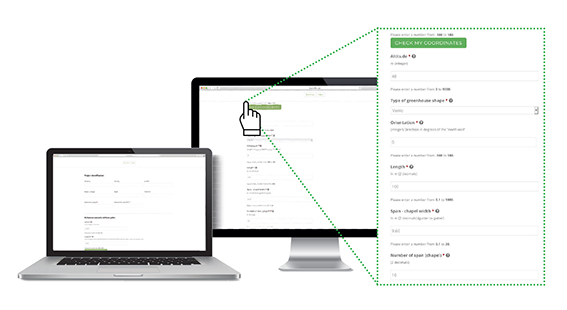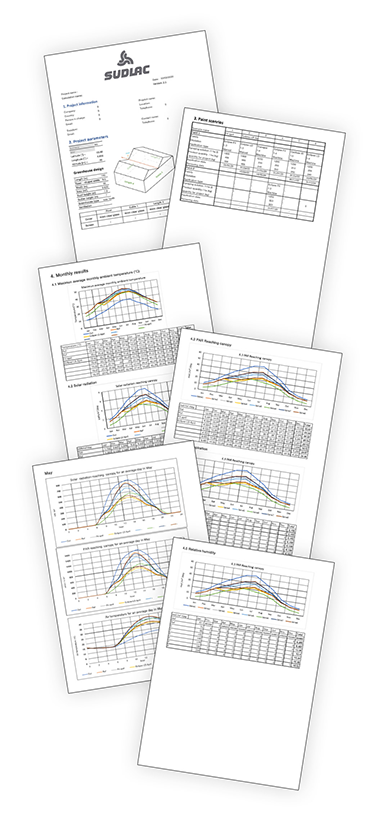Because it is not always easy for a grower to choose his shade paints, application date and dilution, Sudlac has joined forces with Agrithermic to develop a Decision Support Tool which transforms shading data into impact on the climate and culture.
Because it is not always easy for a grower to choose his shade paints, application date and dilution, Sudlac has joined forces with Agrithermic to develop a Decision Support Tool which transforms shading data into impact on the climate and culture.
“Until now, when choosing the shade paints to apply to his greenhouse, a producer mainly had to rely on his experience and regional practices,” says Rémi Weber, Sudlac marketing manager. “Our technical and sales departments explain the percentage of shade and light transmission, but the producer also wants to know the impact of the paint on the temperature of the greenhouse and the plant, on the relative humidity, on active photosynthetic radiation or PAR light … Faced with this dilemma, the manufacturer of shade and diffusion paints decided to develop a tool which transforms the data intrinsic to the product into impact on the climate and on culture. “To do this, we turned to the thermal engineering firm Agrithermic, which had already developed Hortinergy, a greenhouse energy simulation tool validated by the French National Research Institute (INRA), French greenhouses vegetable crops experimentation (Ctifl) and the University of Wageningen.”

An initial version of the tool has been developed and will be tested by Sudlac in 2020. “The tool is extremely precise,” explains Vincent Stauffer from Agrithermic. It takes into account the type of plants and their stage of development as well as all the parameters linked to the greenhouse: dimensions, type of cover (glass or plastic, thickness, diffuse glass, etc.), presence of screens, ventilation, shading of one part of the greenhouse … And it integrates the weather data, thanks to the GPS coordinates of the greenhouse, as well as the properties of the paint, its dilution, the dates of application and cleaning, its degradation curve, the application method … » Several scenarios, one which may include one or two superimposed paints, can be tested simultaneously, making it possible to compare different possibilities. The result is provided in terms of the ambient temperature of the greenhouse, solar radiation, PAR light reaching the plants, relative humidity, plant temperature, etc.
The tool can be used for all crops, regardless of geographic area. “The goal is to make it easier to understand the impact of a particular shade paint and to make decisions,” says Rémi Weber. For tomatoes, cucumbers, peppers and lamb’s lettuce, producers generally have references to facilitate their choice. However, the tool will make it possible to optimise the use of paint with respect to the choice of product as well as its date of application and particularly the quantities to be used, so that the grower gets the most possible benefits. It may also allow the choice of shade paint for crops for which there are fewer references.” The tool will be validated on field in 2020, for an official launch in 2021. Reference scenarios will be available on request for growers and distributors by geographic area and by crop. Sudlac services will also propose to visit for a personalised scenario.
